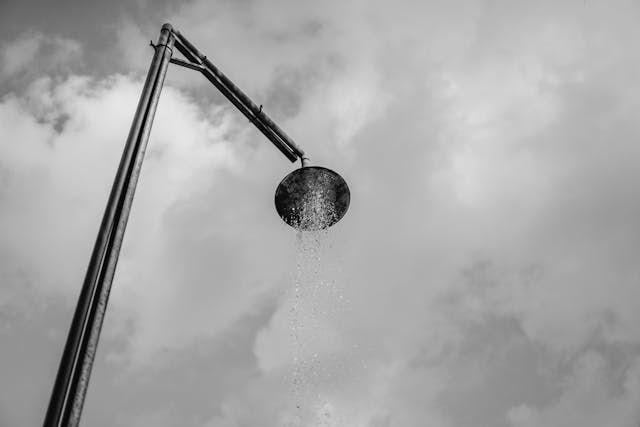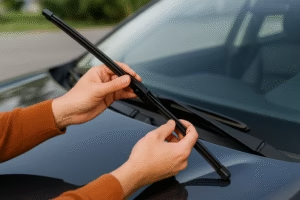Introduction: Why It’s Important to Fix Leaking Shower Arm
A leaking shower arm may seem like a trivial problem, but ignoring it can lead to significant consequences over time. A persistent drip not only wastes water—impacting both your wallet and the environment—but can also lead to mold growth, damage to surrounding walls, and long-term deterioration of your bathroom. Addressing this issue quickly ensures that your shower operates efficiently and prevents unnecessary repair costs in the future.
In this comprehensive guide, we will explore the steps to effectively fix leaking shower arm. Whether you are a seasoned DIY enthusiast or trying home repairs for the first time, these tips will help you tackle the issue with confidence. By understanding the causes of the leak, choosing the right tools, and following proper techniques, you can resolve the problem and prevent it from recurring.
From diagnosing the root cause to selecting the appropriate materials and ensuring a secure fit, this guide covers everything you need to know. By the end, you’ll not only have learned how to fix leaking shower arm, but also gained valuable maintenance tips to keep your shower working perfectly. Let’s get started.
Diagnosing the Cause of a Leaking Shower Arm
Before you can successfully fix leaking shower arm, it’s essential to identify the root cause of the leak. Common culprits include improperly sealed threads, worn-out washers, or even cracks in the shower arm itself. Begin by visually inspecting the connection point between the arm and the wall. Check for any visible cracks, corrosion, or gaps in the seal.
Additionally, assess whether the leak occurs only when the shower is in use or continuously. Continuous leaks often point to issues with the threading or seals, while usage-related leaks may stem from water pressure or wear and tear. Understanding the exact problem will guide your repair strategy.
Tools and Materials Needed
Gathering the necessary tools and materials ahead of time makes the process of fixing a leaking shower arm much smoother. Essential items include:
- Plumber’s tape: This ensures a watertight seal around the threads.
- Adjustable wrench: Useful for loosening or tightening the shower arm.
- Replacement washers: These small components are often the key to fixing leaks.
- Cleaning supplies: A brush or cloth for removing old tape and debris.
- Silicone sealant (optional): For additional sealing in extreme cases.
Having these items on hand will save you from unnecessary trips to the store and ensure you’re prepared to handle any scenario that arises.
Turning Off the Water Supply
Safety should always be a priority when performing repairs. Before starting to fix leaking shower arm, locate and turn off the water supply to your shower. This might be a dedicated valve for the bathroom or the main water supply for your home.
Turning off the water prevents unnecessary mess and ensures a smoother repair process. Test the shower to confirm that no water flows through before proceeding. This step not only protects you from accidents but also ensures you can work without interruptions caused by unexpected water flow.
Removing the Shower Arm
The next step to fix leaking shower arm involves carefully removing the arm. Use an adjustable wrench to unscrew it from the wall, turning counterclockwise. Take your time to avoid damaging the threads or the surrounding wall fixture.
Once removed, examine the shower arm for visible damage, such as cracks, corrosion, or warped threads. A damaged arm may need to be replaced entirely. Additionally, check the inside of the wall fitting for any debris or buildup that could interfere with a secure connection.
Cleaning and Inspecting the Threads
With the shower arm removed, thoroughly clean the threads on both the arm and the wall fitting. Use a brush, cloth, or even an old toothbrush to remove any debris, old plumber’s tape, or mineral deposits.
Inspect the threads closely for signs of wear or damage. Stripped or corroded threads can prevent a tight seal, making it challenging to fix leaking shower arm effectively. If the threads are significantly damaged, consider replacing the shower arm or consulting a professional for further assistance.
Applying Plumber’s Tape
Plumber’s tape is a simple yet highly effective solution to fix leaking shower arm. Start by wrapping the tape around the threads of the shower arm. Apply it in a clockwise direction, overlapping slightly as you go.
Ensure the tape covers the threads completely without being too thick, which could make threading difficult. This layer of tape acts as a sealant, filling gaps and preventing water from leaking through the connection. Plumber’s tape is particularly useful for minor leaks caused by thread irregularities.
Reinstalling the Shower Arm
Reattach the shower arm to the wall fitting by carefully threading it back into place. Begin by hand-tightening the connection, then use a wrench to secure it further. Avoid over-tightening, as this can damage the threads or cause unnecessary strain on the fittings.
Proper reinstallation is crucial to fix leaking shower arm. A secure connection ensures water flows only through the intended channels, eliminating leaks and maintaining the integrity of the fixture.
Testing for Leaks
Once the shower arm is securely reinstalled, turn the water supply back on and test the connection. Run water through the shower and closely observe the arm and its connection to the wall for any signs of dripping or leaking.
If you notice water escaping, try tightening the connection slightly or applying additional plumber’s tape. Thorough testing ensures that your efforts to fix leaking shower arm have been successful and that the leak has been resolved completely.
Preventing Future Leaks
Preventative maintenance is key to avoiding the need to fix leaking shower arm repeatedly. Regularly inspect the shower arm and its connections for signs of wear or damage. Replace washers and reapply plumber’s tape as needed to maintain a watertight seal.
Additionally, avoid using excessive force when adjusting or cleaning the shower arm, as this can weaken the threads or connections over time. Simple preventative measures can save you time and money in the long run.
Conclusion: A Simple Yet Essential Guide to Fix Leaking Shower Arm
Fixing a leaking shower arm is an essential home repair task that can save you from expensive water damage and ensure your bathroom remains functional. By following the steps outlined in this guide, you can effectively fix leaking shower arm and prevent future leaks.
From diagnosing the cause of the leak to applying plumber’s tape and testing for leaks, each step is designed to provide a clear and actionable solution. Whether you’re a seasoned DIYer or a beginner, these techniques will help you address the problem with confidence and efficiency.
Take the time to inspect your shower arm regularly, address leaks promptly, and maintain the fixture properly. With these strategies, you can keep your bathroom in excellent condition and enjoy a leak-free shower experience.

Share this:
- Click to share on Facebook (Opens in new window) Facebook
- Click to share on X (Opens in new window) X
- Click to share on LinkedIn (Opens in new window) LinkedIn
- Click to share on Reddit (Opens in new window) Reddit
- Click to share on X (Opens in new window) X
- Click to share on Threads (Opens in new window) Threads
- Click to share on WhatsApp (Opens in new window) WhatsApp




